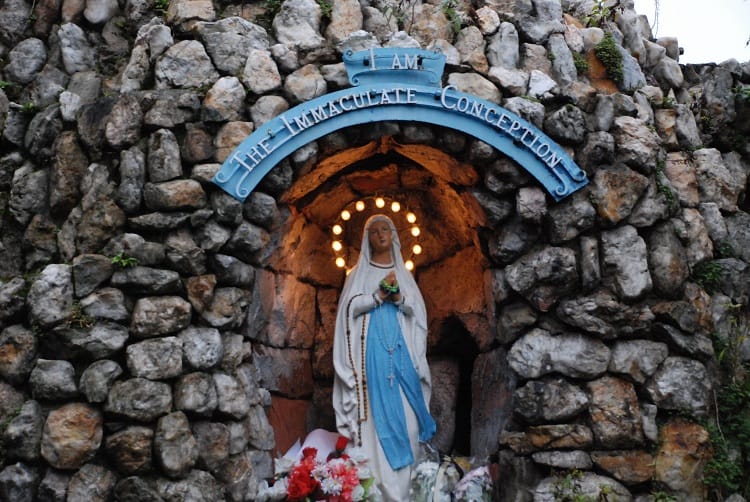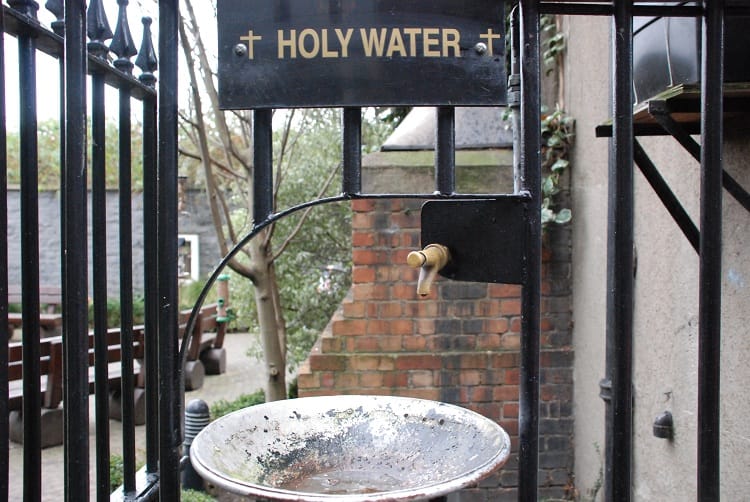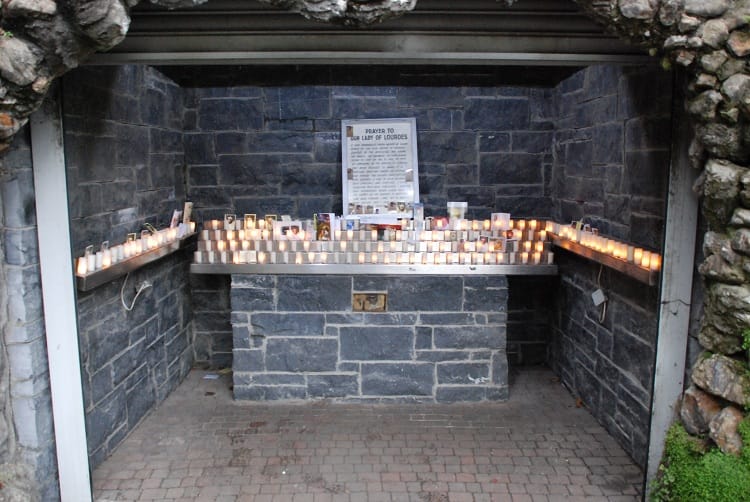What would become of the Civic Offices on Wood Quay if the council relocates?
After The Currency reported the idea of the council moving its HQ, councillors were talking about and thinking through the pros and cons and implications.
Some visit the Meath Street grotto in search of quiet, while for others it is about faith and tradition.

Canon Gleeson blessed them on horseback. During the First World War, he was attached to the 2nd Battalion of the Royal Munster Fusiliers.
The battle of Aubers Ridge was on the horizon. Once the guns had ceased, though, the casualties numbered in the thousands and it was this, says Liberties local Joyce Reid, that inspired Gleeson to build the grotto.
Since 1945, residents of the area have taken a daily left off Meath Street behind St Catherine’s Church. Some come for comfort, others a rapid rosary. But, says Reid, there’s no doubting its importance to what she sees as a village left behind.

When I ask Rita her second name on a recent Saturday morning she laughs, loudly exclaiming “No! Rita No!”
She’s made weekly trips to the grotto for 50 years. “I used to work around here so I’d always come in. I’d shop around Meath Street for years,” she says. “I just say a few prayers for my friends that have problems. I do it for them.”
The grotto sees all sorts. “Oh my God. You get a crowd here on and off all day. All nationalities does be coming here,” she says.
In a hollow, high in the wall, stands Our Lady in a blue shroud, flowers bunched in rows at her feet. To her left is a small cavern with a granite slab inside, and 120 electronic candles placed across the stone. More line the cavern walls.
There are Christmas cards, anniversary cards and birthday cards wedged between the candles, never to be read by those they’re written for.
On a wooden bench in the circular stone garden, an elderly woman sits alone. She takes a packet of Chipsticks from her wheelie bag, and for the next ten minutes or so, watches those praying inside the shrine.
Once the crisps are gone she fires up a fresh Rothmans cigarette and puts a Capri-Sun inside the empty crisp packet, sucking on the straw one minute, the cigarette the next. She glances over to the grotto shop where, inside, Joyce Reid is sitting quietly.
They arrive at the grotto in waves.
“D’ya see him?” Reid asks, the following Monday morning, pointing to a man coming towards the shrine. “Watch. He’ll touch every single leaf.”
Before reaching the statue of Mary, he switches from side to side, plucking at every small leaf along the way.
“All sorts,” says Reid.

She has volunteered in the nearby shop for more than 30 years. “People are encouraged to come in,” she says. “At one time the rosary was recited in here. But the man who organised that just got sick and died so it was never taken back up again.”
Inside the shop, there are shelves lined with cards for sale, for the locals who come for all occasions: deaths, births, birthdays, debts, court cases, funerals, exams, anniversaries and ailments.
Linda Carter says that, growing up in the Liberties, all and sundry would visit the Meath Street grotto. “I’m 45 and went to school down the road.” says Carter. “Mam always brought me up here, me granny always brought me up here. Generally I just come up to say prayers.”
Carter clasps an Our Lady of Lourdes envelope in her right hand. This Saturday is her feast day. Reid chats with a customer just arrived, in for a mass card.
Carter points to a small tree near the statue of Mary. “That’s the tree of hope,” she says. “It’s for suicide. I’d know a few of the families that were touched by suicide so it’s important to them to have somewhere to come and reflect.”
Faith aside, says Carter, the grotto is a community space. “It’s peaceful,” she says. “In the summer I’d come up. I’ll just sit there and reflect. On a summer’s day, it’s like a suntrap.”
But today, it is cold when Carter goes outside. She touches the water from the feature flowing below Our Lady, and places the card at the statue’s feet. She stands a while, head bowed in silence, at the tree of hope.

“Nothing changes around here,” says Reid. Nothing except the candles. Twenty years ago, they were replaced with electronic ones. Fire was a hazard. The price, though, 15 cents, remains the same.
Reid points above and beyond the grotto to a large derelict building. The area, she says, is still in a state of flux. As more development kicks off, there are fewer community spots for locals. In nearby Warrenmount there’s construction, she says.
The Tivoli’s future remains uncertain. The Rupert Guinness Theatre is locked. Carman’s Hall Parish Centre is now a hostel for the homeless. But people still come in their droves to the grotto, she says. It means a lot to some.
“A family from England came and they asked permission to bury their mother’s ashes in here,” says Reid. “She never stopped talking about Dublin. They loved the idea that she’d be sitting amongst her own.”
The Office of Public Works helps to maintain the planting and bedding around the grotto. Brother Bernard next door in St Catherine’s does the rest. When Canon Gleeson saw another war approaching, says Reid, he prayed.
“He was absolutely adored by everybody,” she says. “Everybody recalls him very fondly.”
“When the war was over, what he had seen he never got over,” says Reid. “When there was the threat of the Second World War, he prayed to Our Lady to keep Ireland safe and he said, ‘If you do, I’ll build something in your honour’. So he did.”
Reid speaks fervently of faith, of the Canon and the shrine, and of how incantation alone can cure all ills.
Linda Carter heads back out towards Meath Street, but she’ll return again on Saturday. “It’s been passed down through the generations,” she says. “People have brought their grandkids and when they’re big enough they carry it through.”
At the far end, the same man is still standing near the statue of Our Lady. He dips his fingers in the flowing water and then touches the stone from Lourdes. Walking back, he plucks at every small leaf on his way out.